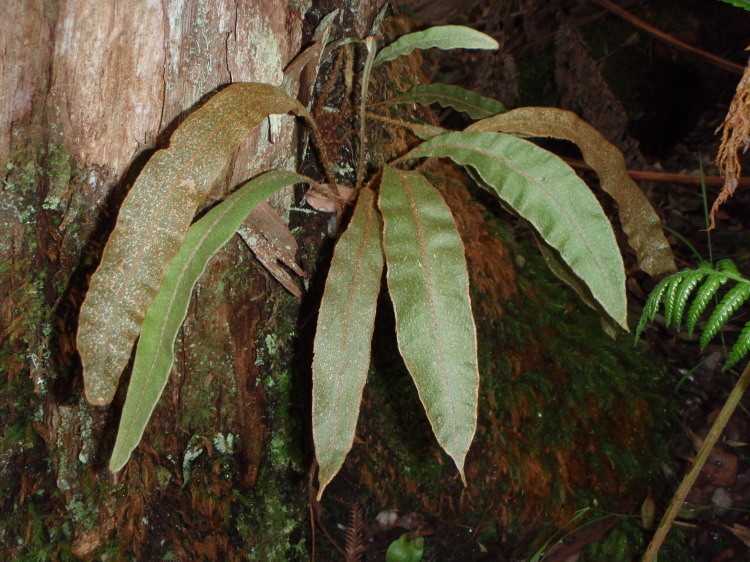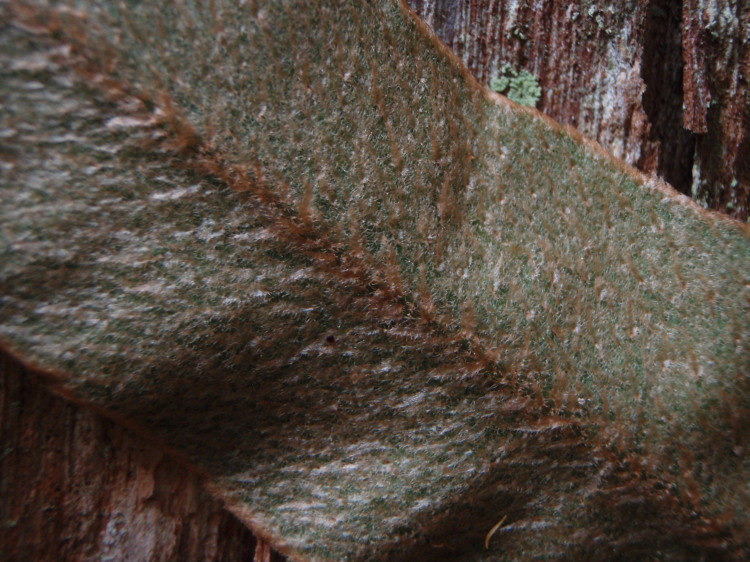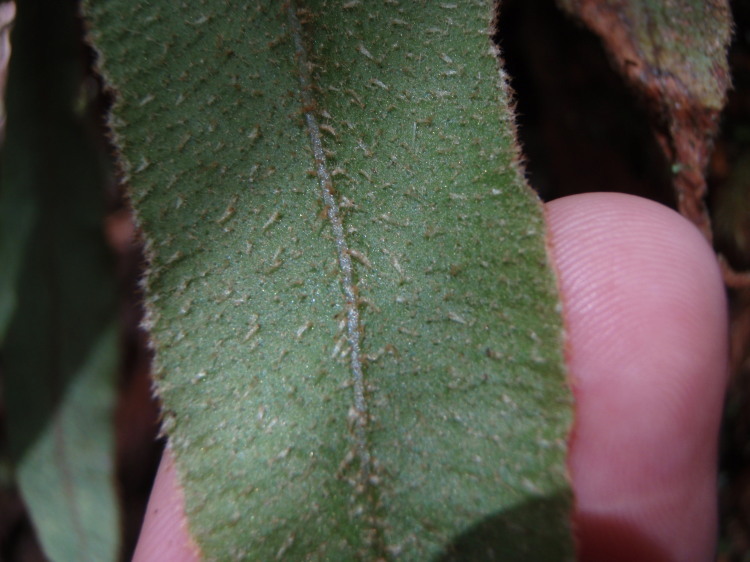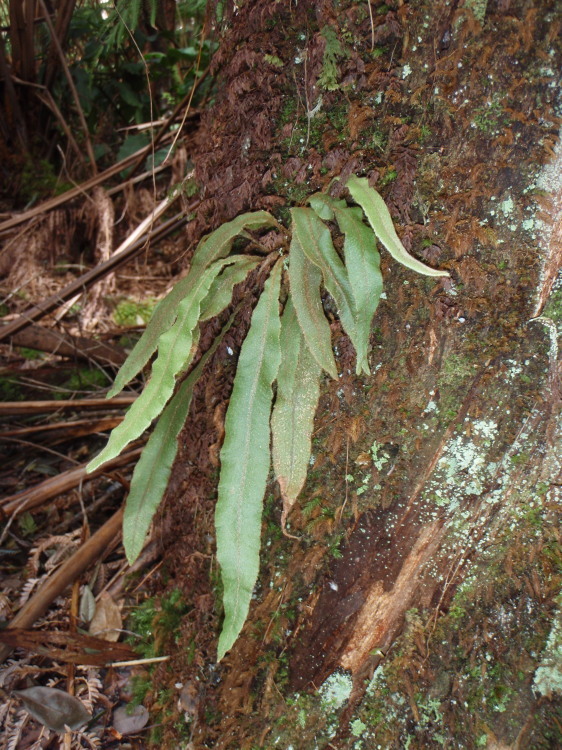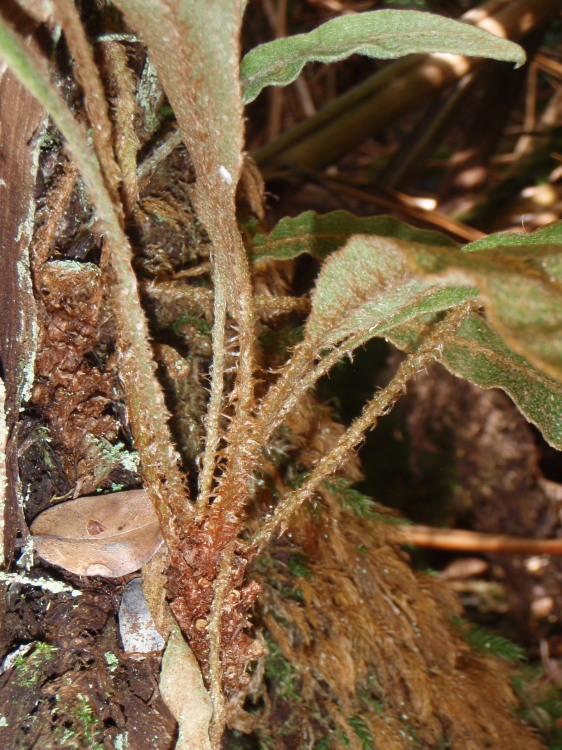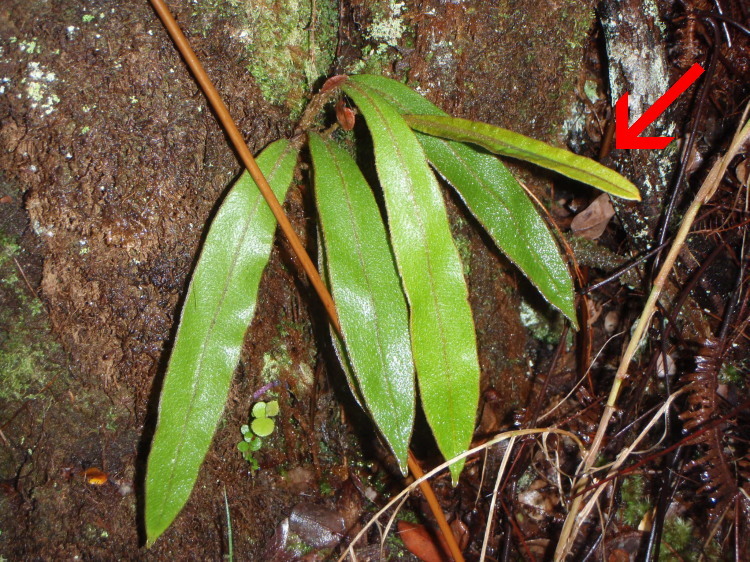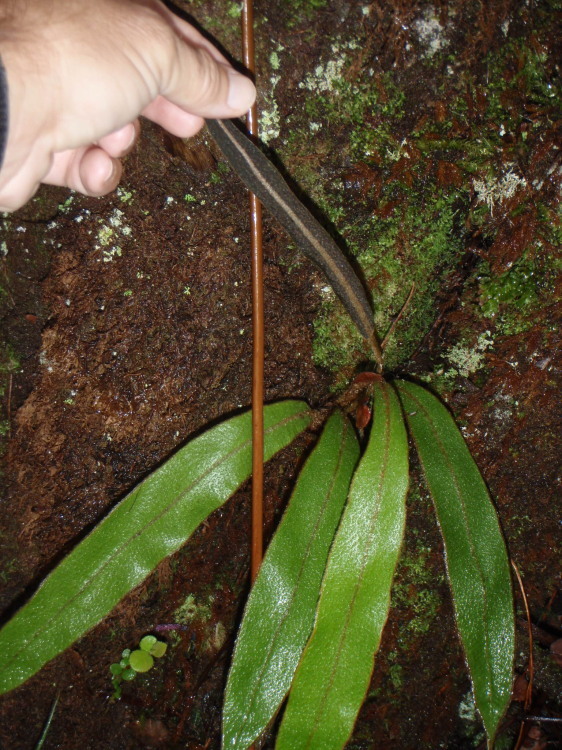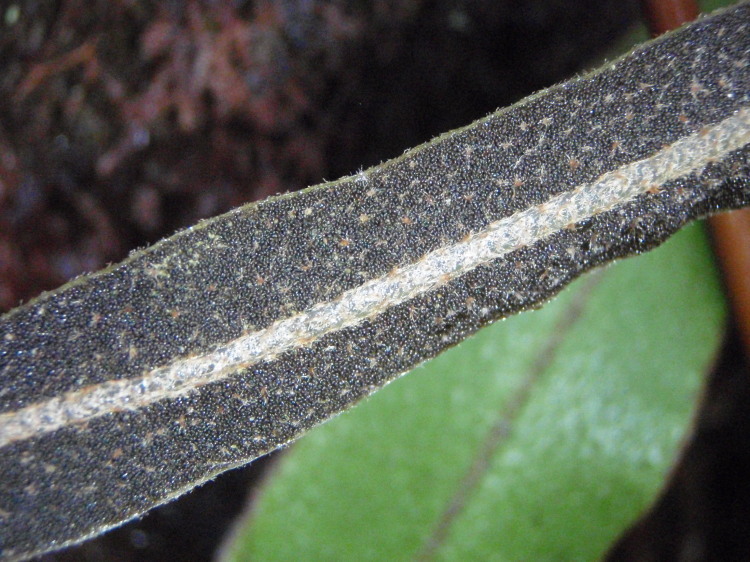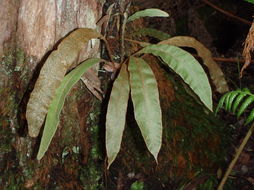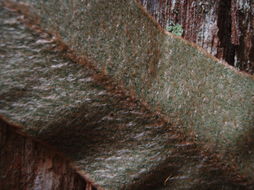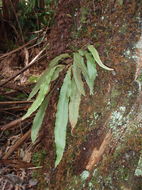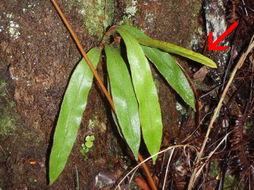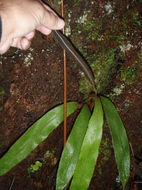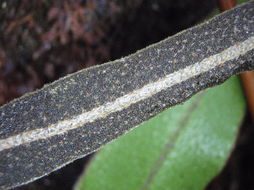-
Native to Hawaii but not endemic. Elevation around 3800 ft./1159 m. This photo shows it growing on the trunk of an Ohia tree (Metrosideros polymorpha). Note the scale covered blades.
-
Native to Hawaii but not endemic. Elevation around 3800 ft./1159 m. This photo shows the abaxial surface of a sterile blade covered with scales.
-
Native to Hawaii but not endemic. Elevation around 3800 ft./1159 m. This photo shows the abaxial surface. The lack of scales suggests a fertile frond, perhaps immature.
-
Native to Hawaii but not endemic. Elevation around 3700 ft./1128 m. This plant is growing on the trunk of an Ohia tree (Metrosideros polymorpha) near the base.
-
Native to Hawaii but not endemic. Elevation around 3800 ft./1159 m. This photo shows the scales on the stipes
-
This fern is native to the Hawaiian Islands but not endemic. The red arrow in this photo identifies a fertile blade which usually have different size and shape compared with the sterile blades. The adaxial surface is densely covered with scales while the abaxial surface is covered with sporangia. This fern is epiphytic in a wet forest south of Thurston Lava Tube at around 3700 ft/1128 m. These ferns can also be terrestrial or epipetric.
-
This fern is native to the Hawaiian Islands but not endemic. This photo shows the sporangia covered abaxial surface of a fertile blade. This fern is epiphytic in a wet forest south of Thurston Lava Tube at around 3700 ft/1128 m. These ferns can also be terrestrial or epipetric.
-
This fern is native to the Hawaiian Islands but not endemic. This photo shows the sporangia covered abaxial surface of a fertile blade. This fern is epiphytic in a wet forest south of Thurston Lava Tube at around 3700 ft/1128 m. These ferns can also be terrestrial or epipetric.


